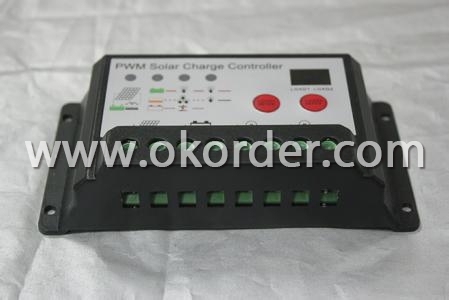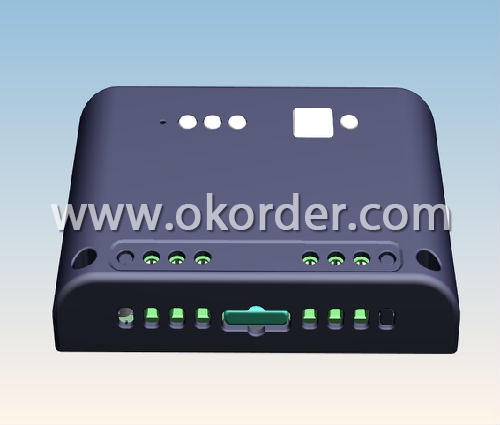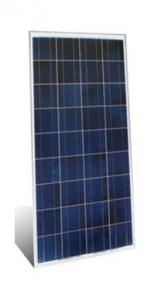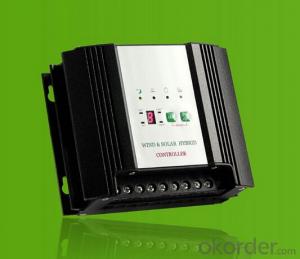H-Series PV controller
- Loading Port:
- Nanjing
- Payment Terms:
- TT/LC
- Min Order Qty:
- 50sets set
- Supply Capability:
- 1-3000sets/month set/month
OKorder Service Pledge
OKorder Financial Service
You Might Also Like
Main features of H-Series PV controller:
Professional MCU microprocessor control, the real charge and discharge of intelligent control;
Total negative control mode, multi-channel input matrix control of solar cells
High pressure, long life of the IGBT as the main switching device controller
Brightest charge voltage detection with "bad back" control to prevent switching into oscillation state
Control circuit and main circuit completely isolated, with a high anti-interference ability
Protection function, operation status, fault LED indicate
Low-power display state, further reducing its loss
Enables parallel operation of multiple machines
Against reverse battery
Remote monitoring (optional)
Optional Configuration of H-Series PV controller:
RS485/RS232 Remote monitoring;
Increase output control
Technical Data of H-Series PV controller:
Voltage level | 12V | 24V | 48V | 110V | 220V |
Rated current range | 30A~100A | 30A~100A | 20A~80A | 20A~60A | 20A~50A |
Battery input | |||||
Rated input voltage (VDC) | 12 | 24 | 48 | 110 | 220 |
Under-voltage protection (VDC) | ≤10.8 | ≤21.6 | ≤43.2 | ≤99.0 | ≤198.0 |
Recovery voltage (VDC) | ≥12.3 | ≥24.6 | ≥49.2 | ≥115.0 | ≥230.0 |
Over-voltage protection (VDC) | ≥16.5 | ≥33.0 | ≥66.0 | ≥150.0 | ≥290.0 |
Over-voltage recovery (VDC) | ≤15.5 | ≤31.0 | ≤62.0 | ≤142.0 | ≤284.0 |
Solar energy input | |||||
Max. open circuit voltage (VDC) | 25.0 | 50.0 | 100.0 | 230.0 | 450.0 |
Max. charge current (A) | 100 | 100 | 80 | 60 | 50 |
Allow PV array points (N) | 5 | ||||
Float voltage (VDC) | 13.7 | 27.4 | 54.8 | 125.0 | 251.0 |
Overcharge protection voltage (VDC) | ≥14.4 | ≥28.8 | ≥57.6 | ≥132.0 | ≥264.0 |
Charge recovery voltage (VDC) | ≤13.2 | ≤26.4 | ≤52.8 | ≤121.0 | ≤242.0 |
DC output | |||||
Rated output voltage (VDC) | 12 | 24 | 48 | 110 | 220 |
Max. output current (A) | 100A | 100A | 80A | 60A | 50A |
Overload capacity | 120% overload 60 seconds off the output / 150% overload for 10 seconds to close the output | ||||
Protection function | Battery over charge, over discharge the battery, the battery reversed,solar cells reversed , counter-attack by night charge , overheating, output overload, output short circuit | ||||
Serial communication | RS485(A、B) | ||||
Mechanical dimensions, work environment | |||||
Size ( D x W x H ) | 350 x 500 x180 | ||||
Reference weight (Kg) | 25 | ||||
Protection level | IP41 | ||||
Max. working altitude (m) | ≤3000 | ||||
Temperature range (℃) | -20 ~ +65 | ||||

H-Series PV controller

H-Series PV controller
Packaging & Delivery of H-Series PV controller:
Packaging: Wooden box or Customized
Delivery: Depends on the quantity or Customized
- Q:Can a solar controller be used with solar panel backpacks?
- Yes, a solar controller can be used with solar panel backpacks. A solar controller helps regulate the charging process and protects the batteries from overcharging or over-discharging. It ensures optimal performance and longevity of the batteries, making it a useful component for solar panel backpacks that have built-in battery systems.
- Q:Can a solar controller be used in a solar-powered satellite system?
- Yes, a solar controller can be used in a solar-powered satellite system. A solar controller helps regulate the charging and discharging of the batteries in a solar system, ensuring optimal performance and protection against overcharging or deep discharging. In a solar-powered satellite system, the solar controller would play a crucial role in managing the power generated by the solar panels and efficiently storing it in the batteries for use during periods of low sunlight or high power demands.
- Q:What is the maximum wire size that can be connected to a solar controller?
- The maximum wire size that can be connected to a solar controller depends on the specific solar controller model and its specifications. It is important to consult the manufacturer's documentation or user manual to determine the maximum wire size that can be used with a particular solar controller.
- Q:Can a solar controller be used with a solar-powered heating system?
- Yes, a solar controller can be used with a solar-powered heating system. A solar controller, also known as a charge controller, is responsible for regulating and controlling the flow of electricity from the solar panels to the heating system. It ensures that the solar panels are operating at their maximum efficiency and prevents overcharging of the batteries or system. By using a solar controller, the solar-powered heating system can effectively harness the energy from the sun and distribute it to the heating components, ensuring optimal performance and maximizing energy savings.
- Q:What is the maximum number of communication protocols supported by a solar controller?
- The maximum number of communication protocols supported by a solar controller can vary depending on the specific model and brand. However, it is common for solar controllers to support multiple protocols, including popular ones like RS485, Modbus, and CANbus.
- Q:What is the role of a solar controller in preventing damage to the solar panels from overvoltage conditions?
- Maintaining the integrity and longevity of solar panels is crucial, and the role of a solar controller in preventing damage from overvoltage conditions is essential. Overvoltage occurs when the solar panels generate a voltage that exceeds their safe threshold. This can happen due to factors like fluctuating sunlight intensity, faulty wiring, or malfunctioning components. The solar controller, also known as a charge controller or regulator, acts as a protective device between the solar panels and the battery bank or grid connection. Its primary function is to regulate the charging process and prevent overcharging of the batteries or sending excessive voltage to the grid. In the context of preventing damage from overvoltage conditions, the solar controller plays a vital role by performing the following tasks: 1. Continuous Voltage Monitoring: The solar controller continuously monitors the voltage output of the solar panels, ensuring it stays within the safe range specified for the panels. If the voltage exceeds this limit, the controller takes immediate action to prevent potential damage. 2. Voltage Regulation: When the solar panels produce more energy than necessary for the batteries or grid connection, the solar controller regulates the voltage output. It achieves this by diverting excess energy to a secondary load, such as a water heater or storage system, or by reducing the charging current to prevent overvoltage. 3. Load Disconnect: In specific cases, like when the batteries are fully charged or the grid connection is unavailable, the solar controller may disconnect the load from the solar panels altogether. This prevents further charging and reduces the risk of overvoltage damage. 4. Fault Protection: Solar controllers have various protective mechanisms, including features like short-circuit protection, reverse polarity protection, and overcurrent protection. These mechanisms ensure that even in the event of a fault, the solar controller prevents damage to the solar panels. In conclusion, the solar controller plays a critical role in safeguarding against overvoltage conditions and protecting solar panels from potential damage. By continuously monitoring and regulating the voltage output, as well as providing protective features, it ensures the optimal and safe operation of the solar energy system.
- Q:Can a solar controller be used with a solar-powered restaurant or cafe?
- Yes, a solar controller can be used with a solar-powered restaurant or cafe. A solar controller helps manage and regulate the flow of electricity from the solar panels to the restaurant's or cafe's electrical system. It ensures that the solar panels are charging the batteries efficiently and prevents overcharging or discharging. By using a solar controller, a solar-powered restaurant or cafe can optimize their energy usage and reduce their reliance on the grid.
- Q:Can a solar controller be used with solar-powered waste management systems?
- Yes, a solar controller can be used with solar-powered waste management systems. A solar controller helps regulate the flow of electricity from the solar panels to the system's batteries, ensuring the batteries are charged and maintained properly. This is crucial for solar-powered waste management systems as they require a reliable power source to operate efficiently. The solar controller helps optimize the charging process and protects against overcharging or undercharging, extending the lifespan of the batteries and ensuring optimal performance of the waste management system.
- Q:What is the role of a load control function in a solar controller?
- The role of a load control function in a solar controller is to regulate and manage the power output of the solar panels, ensuring that the energy generated is efficiently utilized and distributed to the connected loads. It helps prevent overcharging of batteries and protects the system from damage due to overvoltage or overcurrent conditions. Additionally, the load control function can prioritize and schedule power supply to different loads, optimizing the use of available solar energy.
- Q:What is the maximum distance between the solar panel and the solar controller?
- The maximum distance that can be maintained between the solar panel and the solar controller relies on several factors, including the wiring type, voltage drop across the span, and the unique specifications of the panel and controller in use. Typically, it is advised to keep this distance as short as feasible to reduce voltage drop and guarantee effective energy transmission. Nevertheless, in the majority of instances, a maximum distance of roughly 100 feet (30 meters) is deemed appropriate for low-voltage solar systems. To ascertain the optimal distance for your particular setup, it is always advisable to refer to the manufacturer's guidelines or consult with a professional.
1. Manufacturer Overview |
|
|---|---|
| Location | Hefei,China |
| Year Established | 2004 |
| Annual Output Value | Above US$0.6 billion |
| Main Markets | Australia;Italy;Germany;U.K. England;Franch;NewZealand; |
| Company Certifications | Growatt5000;VDE0126;SAA;G83;TUV |
2. Manufacturer Certificates |
|
|---|---|
| a) Certification Name | |
| Range | |
| Reference | |
| Validity Period | |
3. Manufacturer Capability |
|
|---|---|
| a)Trade Capacity | |
| Nearest Port | Shenzhen |
| Export Percentage | 0.4 |
| No.of Employees in Trade Department | 10 People |
| Language Spoken: | English;Chinese;French;German |
| b)Factory Information | |
| Factory Size: | Above 15,000 square meters |
| No. of Production Lines | Above 5 |
| Contract Manufacturing | OEM Service Offered;Design Service Offered |
| Product Price Range | Average |
Send your message to us
H-Series PV controller
- Loading Port:
- Nanjing
- Payment Terms:
- TT/LC
- Min Order Qty:
- 50sets set
- Supply Capability:
- 1-3000sets/month set/month
OKorder Service Pledge
OKorder Financial Service
Similar products
New products
Hot products
Hot Searches
Related keywords





























